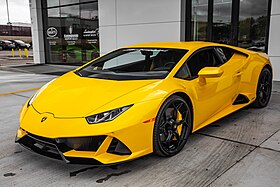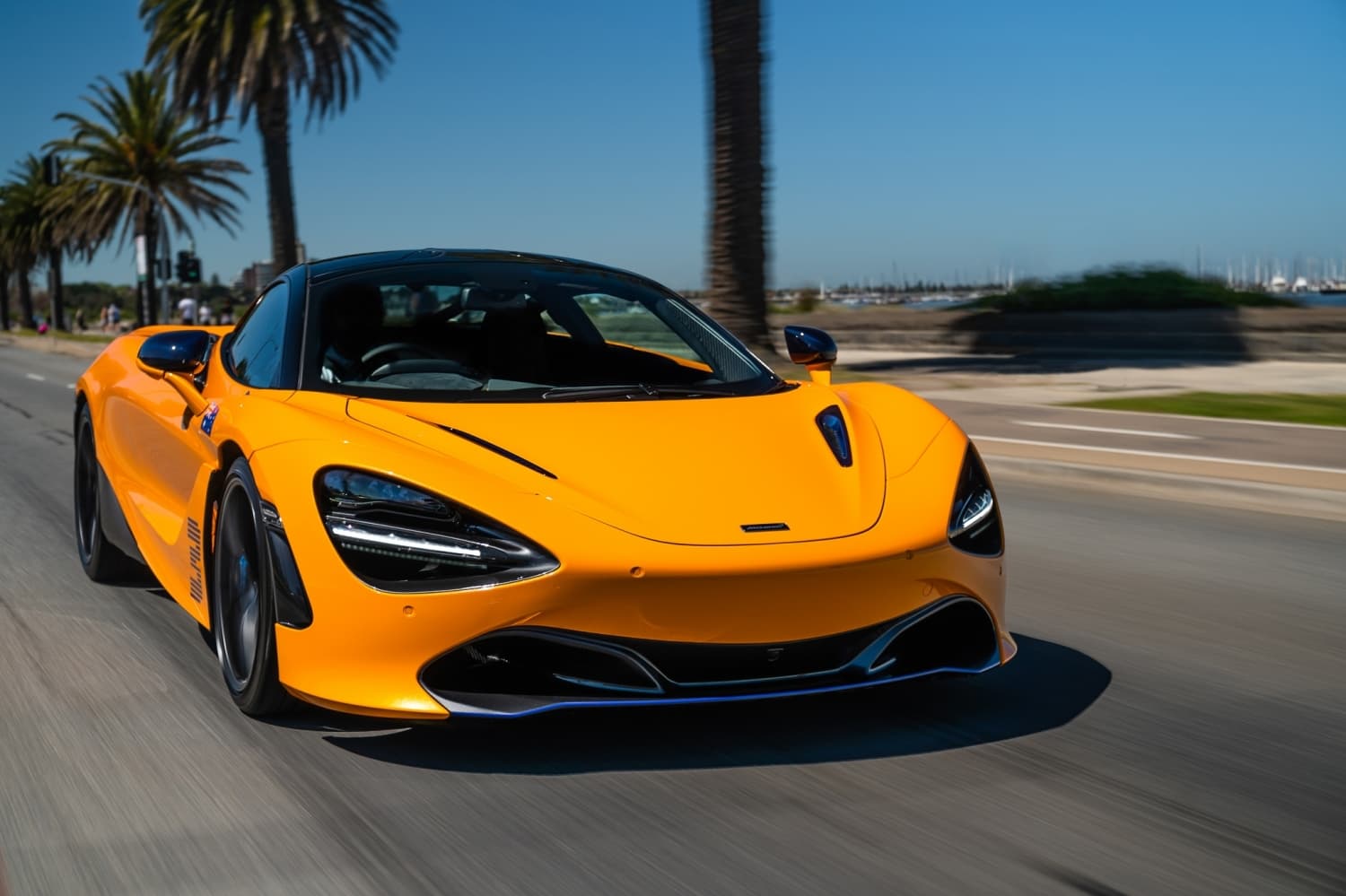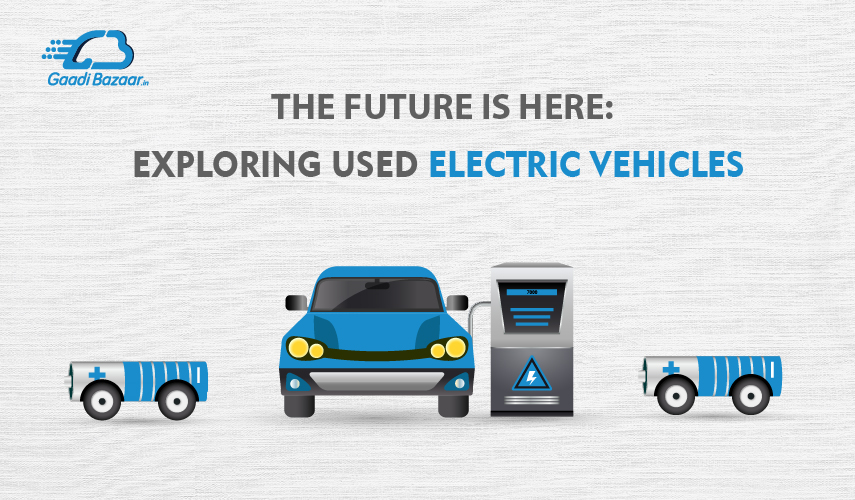Huracan

Specifications[edit]
Engine[edit]
The Huracán maintains the 5.2-litre naturally aspirated Audi/Lamborghini V10 engine with an additional 0.2 litres, compared to the Gallardo, tuned to generate a maximum power output of 449 kW (602 hp; 610 PS). To ensure its balance and performance, the car is mid-engined. The engine has both direct fuel injection and multi-point fuel injection. It combines the benefits of both of these systems; it is the first time this combination is used in a V10 engine. To increase its efficiency, the Huracán's engine also includes a start-stop system.[citation needed] The firing order of the engine is 1, 6, 5, 10, 2, 7, 3, 8, 4, 9. This is printed on a metal plate on the top of the engine, as with all other Lamborghini models.
The drag coefficient of Cd=0.39 was undisclosed until 2021.[9]
Performance[edit]
With a curb weight of 1,553 kg (3,424 lb), the Huracán LP 610-4 has a power-to-weight ratio of 2.55 kg (5.62 lb) per horsepower.[10]
Road test measurements of LP 610-4[edit]
About the Author
In legal discourse, an author is the creator of an original work, whether that work is in written, graphic, or recorded medium.[1] Thus, a sculptor, painter, or composer, is an author of their respective sculptures, paintings, or compositions, even though in common parlance, an author is often thought of as the writer of a book, article, play, or other written work.[2] In the case of a work for hire, "the employer or commissioning party is considered the author of the work", even if they did not write or otherwise create the work, but merely instructed another individual to do so.[1]
Typically, the first owner of a copyright is the person who created the work, i.e. the author. If more than one person created the work, then a case of joint authorship takes place. Copyright laws differ around the world. The United States Copyright Office, for example, defines copyright as "a form of protection provided by the laws of the United States (title 17, U.S. Code) to authors of 'original works of authorship.'"[3][4]
Latest Blogs from this Author
Blogs you might also like






 07941055729
07941055729


























 Previous
Previous






















